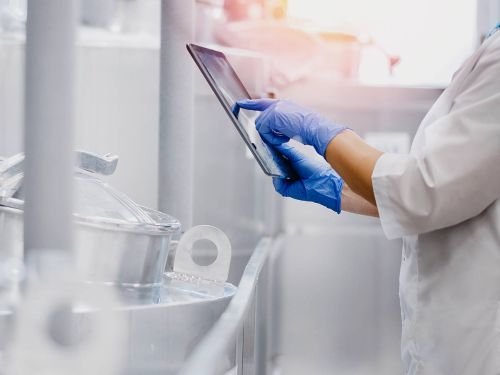- IO-Link — main page
- Industries
Industries overview
No two applications are alike. And each application therefore brings with it its own unique requirements. This includes, and especially, those for automation technology. We have adapted our IO-Link masters to meet these challenges and structured our portfolio into two areas. We offer IO-Link masters for process automation and IO-Link masters for industrial automation.
Hygienic cleanability and industrial robustness
IO-Link masters for process automation are aimed at customers in the food and beverage, pharmaceutical, and chemical industries, for example. The highest hygiene standards apply in these areas. Thanks to IP69K and the selected materials, our IO-Link masters for these requirements are ideally equipped for regular, intensive cleaning processes.
Our IO-Link masters also demonstrate their strengths in industrial automation. The robust devices with IP67 housings withstand shocks, vibrations, and the effects of welding spatter or industrial oils. This makes them ideal for use in the field, directly on the machine.
We will help you find the ideal solution.
No matter what industry you operate in or what requirements it entails, we have the right solution for you. We'd be happy to work with you to find the right product – or even a complete solution.
| Process automation — food series | Factory automation — coolant series | ||
|---|---|---|---|
| IO-Link master / Ethernet modules / IO-Link modules / Switches | |||
 |
|
 |
|
| IO-Link master ➜ | |||
| ecolink connection technology | |||
 |
|
 |
|
| ecolink connection ➜ | |||
| IO-Link devices | |||
 |
We offer suitable devices for many applications in the process industry. Relevant approvals (EHEDG and 3A), declarations of conformity (EC1935/2004, FDA, FCM) and device design (stainless steel, OPC (open plant cleaning), single-piece devices) are available for specific devices. |
 |
The largest IO-Link device portfolio, with thousands of sensors for most applications in factory automation. We offer a wide range of IO-Link devices, including position, process, motion control, identification, vibration and much more |
| IO-Link devices ➜ | |||
Whether it's the food industry, agriculture, water and wastewater treatment, mobile machinery, robotics, or the automotive industry, we offer the right products, solutions, and services for every industry.
We support you in achieving your goals of optimising the efficiency, quality, and reliability of your plants and processes through automation.
With in-depth industry understanding, innovative technology, and collaborative partnerships, we accompany you on the path to the optimal solution. Because your challenges are what drive us.





